Migración
A glimpse of hope against racism and xenophobia: the opportunity offered by Intercultural Cities.
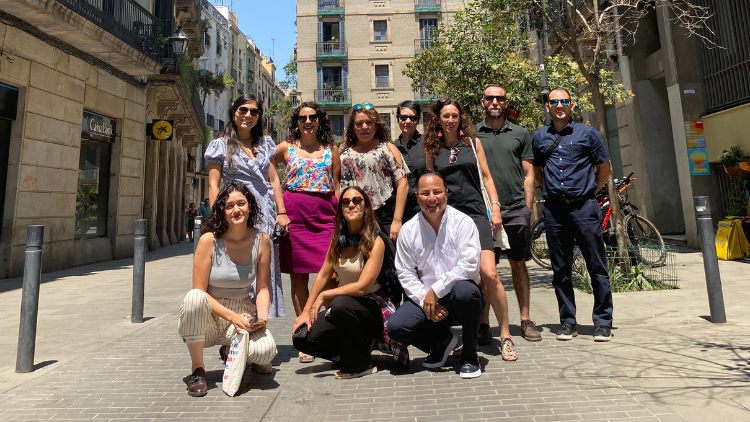
Do we aspire for a multicultural or rather an intercultural Mexico? Definitions go beyond words, but instead strive to reconstruct the practices towards a more inclusive society. Nowadays, inclusivity has been retrieving exceptional importance, but questions still arise. How can Mexico deconstruct the old, but permanent rhetoric of racism and xenophobia? How can inclusion far reach all vulnerable groups, especially those under the circumstances of human mobility?
These efforts of self-reflection within Mexico encouraged a revision to programs that have succeeded in their implementation, taking a special look at the well-established agenda in Catalunya and País Vasco. There is no doubt, amid the current scenario of the Paris protests, that these questions point toward the urgency to contextualize and fully understand the implications of such a subject. Today, Mexico needs to be recognized as not only a country of transit for migrants but also become a strong destination point. A tendency that has been rapidly growing up to a 123% from 2000 to 2020, according to the International Organization for Migration.
Therefore, deciding to take a step further and recognize this changing pattern of migration, the Mexican office visited Spain as an exercise to study said agenda. Top-level experts of Institutions and Organizations of equality and inclusion offices from key municipalities in Nuevo León, Durango, and Mexico City were then invited, aiming to observe, reflect and learn about better practices, deconstructing multiculturalism and instead reexamining the need of thinking towards Intercultural Cities.
It is important to consider, Catalonia and Basque Country have faced their own share of nationalist movements, and beyond that, have still demonstrated to shape successful host cities like Barcelona and Bilbao. Cities that did not only offer a warm welcome, but a learning hot spot for experts on the topic.
Understanding Intercultural Cities in Catalonia and Basque Country
To fully understand how public policy works in Spain about migration, it is fundamental to grasp the concept of “empadronamiento” or the right to registration. An instrument through which people can obtain basic access to the education and health system, an instrument designed to dignify the person through the recognition of their basic needs and, more importantly, letting them hold on to a sense of belonging and true integration into the system.
As well, intercultural mediators are a fundamental character within the neighborhoods, not only promoting integration inside of said groups but also functioning as a legitimate channel for organizations and institutions. In Catalonia, for example, the City of Sabadell, inhabited by 200,000 people, has created an immigrant-host model so successful that has now become a refugee city. This model has based its public policy on the incorporation of cooperation through humanitarian assistance, following the principles of impartiality, independence, neutrality, and a humanistic scope.
On the other hand, Barcelona has implemented, since 2010, the “Intercultural Barcelona” program, considering three principles: equal access to rights, the recognition of the diversity of its citizens from a gender perspective, and its embedded historic memory. Adding to it, safe spaces of dialogue have been promoted to encourage more positive interactions capable of hosting ideas and actions of accountability. Therefore, by retaking these principles, Barcelona has developed communication programs to improve the intercultural integration between the City Hall and its strategies of territorial action, better known as the Anti-rumor strategies. This last one strongly focused on changing the discriminatory narratives to stop the replication of racial stereotypes.
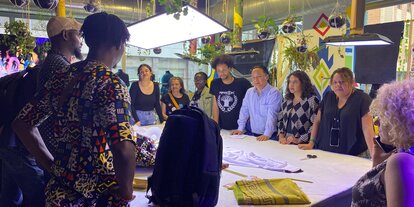
Bilbao, en Koopsf34.
Un espacio de coworking replanteado para tener una ideología africana: Koop SF 34 es un vivero de microempresas sociales creadas por personas de origen subsahariano
© María José SalcedoOne glance at the hate pyramid shows that an anti-rumors strategy aims to focus on the most crucial factor: stereotypes and prejudices. In Barcelona, the communication campaigns work with associations collaborating with the districts and universities. One of the most successful programs is Prometeus, a community program through which neighbourhoods and universities ensure that students from public schools in neighborhoods with a lower rate of university students (in contrast with the urban mean) can also have equal access to the academic institutions and successfully complete their studies, regardless of their economic and social contexts. Prometeus has clearly achieved its objective: it has increased the inclusion of vulnerable groups within the education level.
In Bilbao, the intercultural plan is similar to the one in Barcelona, but it also adds to its core principles to promote the sense of belonging and vicinity to its program. This is highly important, as it is a crucial fact that defines the process of inclusion and conveys a wider and more extent field of work, as well as adding the intervention with civil groups formed by migrants to encourage citizen participation. The plan, which guides the Bilbao strategy, has retaken the Intercultural Cities Program from the European Council, integrating programs of access to health and family planning, anti-rumor strategies and inclusive sport projects against racism and discrimination, for example with the Score program.
Nonetheless, beyond what has been stablished in formal plans and the legislation, it was quite clear that the Bilbao strategies have been made successful thanks to the great willingness and disposition to participate coming from the well-organized civil society. Throughout the span of one week, 18 different organizations were visited by the Mexican delegation to see their work on strengthening such program. From Doctors of the World, social collectives that promote citizen participation through anti-rumor campaigns, entrepreneurship groups conformed by migrants, refugee assistance commissions and even the municipal police all show the extensive network of collaboration in which cooperation is key through an intercultural approach. The working spaces that we visited from these numerous organizations, allowed us to observe how their plans have been adapted and adopted to be put into practice. As well as observing all of the functional implications of such: logistics, collaboration and disposition to network on the same level among diverse actors.
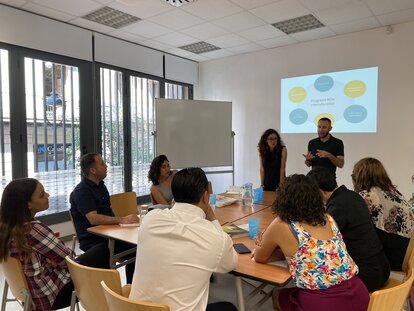
Reunión con el programa Antirumores de Barcelona.
© María José SalcedoWhat can we replicate in Mexico?
To promote interculturalism as a policy, it is strongly needed to understand two fundamental factors. The first one is to comprehend that peace can't be solely defined by the “absence of war”, but rather the recognition of the human rights of every single individual. Second, to recognize that a multicultural city doesn't have the same meaning and implications as an intercultural city. Multiculturalism is based on a model of coexistence, while interculturality has deeper levels to it that convey the interaction and integration amongst such different groups. At the end of the day, interculturality aims to encourage plural and open societies, capable of guaranteeing respect and tolerance, key liberal values that need to be protected.
Therefore, considering this, the definition of “peaceful neighborhoods” changes. Indeed, conflict may always arise, since it is intrinsic to any community, but it rather means a neighborhood in which the rights of every individual, regardless of nationality, gender, origin, ethnic group, or religion are fully recognized and respected. Then, facing diverse migratory flows and considering both domestic and external policy, Mexico must urgently recognize that its dynamic is changing to a country with much more diverse nationalities. Even then, it must always be identified that the country has also been formed by many other minority groups, like indigenous groups or internally displaced population, which faces a greater invisibility of their rights.
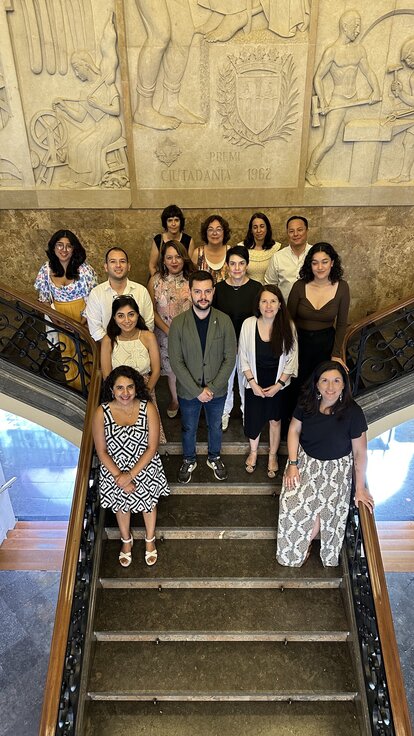
Reunión con Departamento de Igualdad, Género y Diversidad del Ayuntamiento de Sabadell.
© María José SalcedoUndoubtedly, this opportunity to observe and study different practices on public policy and the work of civil society organizations allowed us to learn how Spain has achieved authentic intercultural legislation. Then, through these case studies, Mexico could also embark on the formulation of municipal planning for Intercultural Cities. Clearly, these plans are already on track for different cities and can be replicated in different neighborhoods by adapting the appropriate elements corresponding to the metropolis's nature.
Taking into consideration that a registration system might be difficult to implement in Mexico, it is necessary to map out the territory by carrying out interviews with focal groups that allow us to know the concerns of the neighbors. Then, approaching the experiences and realities of said groups could be considered an investment to start replicating anti-rumor strategies, in which the main objective would be to convert a multicultural society into an intercultural one.
Taking an intercultural perspective is significant to permeate it into all layers of institutions and society. For example, in the smart city program, it is through the aspect of urban pacification that intercultural factors are taken into consideration through transversal human mobility, public spaces, and recreational spaces that promote citizen interaction.
Lastly, all activities and programs on the planning require support and appropriation by the civil society and neighbors to make it possible for the seminaries and communication campaigns to succeed. An intercultural strategy always places the citizen at the center, given that this is the actor that denounces the behaviors and attitudes that damage cohabitation. Once again, this experience and opportunity for reflection confirm our vision as liberals: more tolerant and open societies are always constructed from bottom to top.
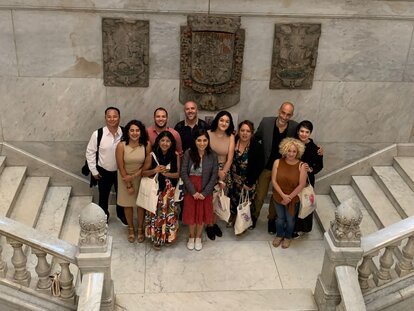
Agradecemos al equipo del Área de Cooperación, Convivencia y Fiestas del Ayuntamiento Bilbao por su recibimiento.
© María Joé Salcedo